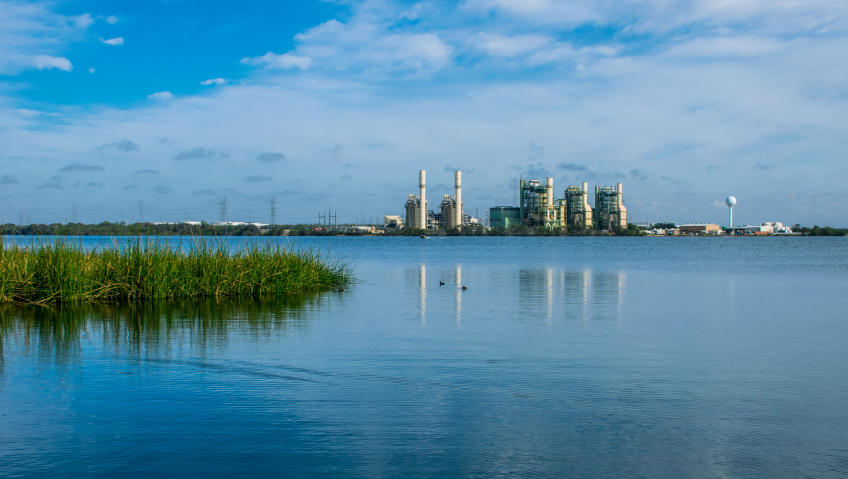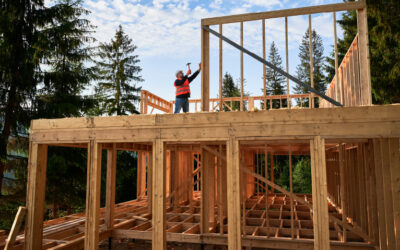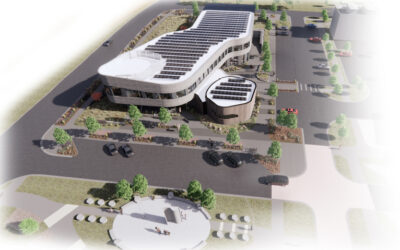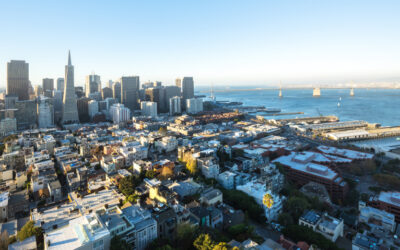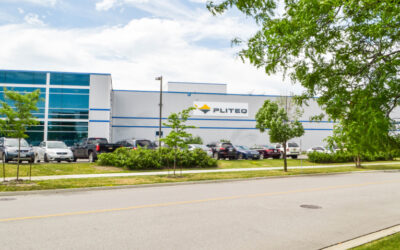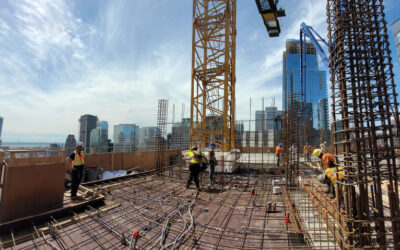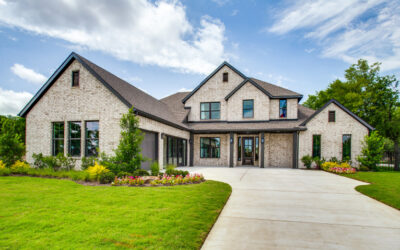Construction in Focus last spoke with the U.S. Green Building Council (USGBC) in 2019 to learn about the organization’s mission to transform buildings and communities through LEED (Leadership in Energy and Environmental Design) and other important initiatives. We caught back up with USGBC this month to learn about current efforts to help architects, building owners, and developers meet their sustainability goals.
USGBC has been facilitating decarbonization and net zero building for well over a decade. These initiatives are not new, Senior Policy Counsel Elizabeth (Liz) Beardsley at USGBC points out. “These are important moments for acceleration in sustainability, and supporting planet and people, that we’ve been working on for a long time with our community. What’s changed is both the urgency and the opportunity.”
The most recent assessment reports by the Intergovernmental Panel on Climate Change (IPCC) have helped drive home this urgency. “That really put a fine point on the need for the building sector to make major changes and called for new buildings to be net zero starting now, and for the rate of retrofits for existing buildings to double,” Beardsley says. “Data shows that nearly everyone is affected in one way or the other already. And I think that sort of palpable proximity is really driving this willingness to take on change and make this transformation for better quality of life in the future.”
The Inflation Reduction Act (IRA) and the Infrastructure Investment and Jobs Act (IIJA)—which contains around $450 billion in climate spending, with extensive new programs specifically for public and nonprofit buildings—have been other important catalysts.
“That’s something we’ve advocated for years,” she says. “We’re really thrilled that our advocacy has resulted in the Inflation Reduction Act, including funding for buildings and incentives. So, we’re working to help make that investment as effective as possible, helping to spread the word amongst our community on how you can use these different pots of money to make your project even deeper green and lower-carbon, how to take advantage of technical assistance and some of the tax incentives.”
This accomplishment is one element of a holistic mission with many moving parts that share a common goal. “Obviously, LEED is our flagship program for green building certification,” Beardsley says, “but that’s backed up by our whole infrastructure of education, of professional credentials, of communities across the country and around the world, of practitioners that want to make this positive change and folks bringing all those pieces together. And so, now, it’s really the moment to leap ahead with this urgency and opportunity that we have.”
One current focus within this overarching mission is to “help the building community understand the interconnectedness of things,” Beardsley says. Consider, for example, the impacts of green infrastructure to improve the management of stormwater on a building site and to create a landscape that doesn’t require potable water. “That actually also has benefits to climate. Every time you use a gallon of water from your public water system, that had to be pumped and treated. And naturally, if it goes into the wastewater system, it gets treated then pumped again. So, there’s a lot of energy and greenhouse gas emissions associated with that.” Another example is the use of green space to mitigate the impact of heat islands.
“It’s really important to understand those connections,” Beardsley says. “We promote a holistic approach to building. And if climate is the biggest outcome that people are worried about right now, that doesn’t mean you don’t consider the green infrastructure, water efficiencies, where you’re located. That’s been a part of LEED from the beginning.” Indeed, the program encourages a wide range of far-reaching solutions that have an impact over time. This might include reusing an existing building as a way to save embodied carbon, or choosing a building site in a walkable neighborhood with public transportation to save on carbon emissions.
“Understanding this holistic approach has delivered a lot of benefits for climate mitigation adaptation,” Beardsley explains. “Not all of those are easy to quantify; in the policy world there’s a lot of focus on energy, which is obviously critical, but these other impacts do add up, and they improve your overall quality of life and the sustainability of your project.”
USGBC continues to work closely with federal, state, and local government on policies, and the ongoing enthusiasm for this partnership is encouraging. “We’re still seeing real interest in green building policies across the country in different states and localities,” Beardsley says. “What’s really interesting is we are seeing that even for some of the most progressive cities that have benchmarking policies and have building performance standards. They are still embracing LEED and green building as one of their core practices. They see how our integrated design and holistic approach—where you consider how all the aspects of building fit together and you’re reducing waste along with being energy-efficient—how that really delivers the best outcome for them. So, that’s exciting to see as these cities enact their next-gen policies, and LEED is still absolutely part of that.”
USGBC’s LEED Zero program takes it to the next level, recognizing buildings that have achieved net zero over the course of a year in carbon, energy, water, or waste. “We’re excited that in 2022 we hit 100 certified projects,” Beardsley says. “And we are getting market feedback on that program as we look to the future of LEED.”
Presently, USGBC is in the process of forming a series of advisory and technical committees that will be working on the program’s next version, LEED v5. “Considering how the LEED program and the LEED Zero program work together is part of what they’ll be doing,” Beardsley says. “So that’s really exciting. We’ve gotten a lot of input from the market and will continue to do that.”
Over the past year, USGBC has held sessions in which anyone was welcome to attend and give input as to where LEED should go in the future. Drawing on that input, the team produced a paper in June 2022 called The Future of LEED, which outlines the core principles for the next version. At the heart of the issue is “how we support identified imperatives,” Beardsley says. This includes a focus on collaboration and carbon reduction, but with more flexibility, so that lower performers can also jump on board.
Enabling this increased inclusion is important, “because as much as we love LEED, every building is not going to be LEED,” Beardsley says. “We still need [to access] all of that low-hanging fruit—for projects to get on board and make the improvements that they can, which is to reduce their greenhouse gas emission contributions and contribute to quality of life in our cities and suburbs and so on.”
Along with developing the next version of LEED, USGBC is also looking at ways to scale high-performance buildings at the portfolio level. “We are currently working on understanding what the needs are, what the gaps are in the market to serve those portfolio owners and really enable them to develop detailed road maps, and then start to implement them, and be able to track and communicate and share with their investors and their stakeholders where they are in that road map. What we’re seeing is the missing piece and we think we can use all that we’ve learned, and our extensive community and stakeholders, to get something out there that will help make that part of the market transformation happen.”
2023 marks USGBC’s thirtieth anniversary, and while the organization is celebrating the milestone, it is also looking to the future and what comes next. “We’re focused on what we have to do now and our eagerness and our dedication to getting to this next phase,” Beardsley says. “We’re not the type to rest on our laurels at all.”
USGBC’s track record demonstrates this enthusiasm. USGBC has already normalized practices—from green buildings to integrative design—that “used to be considered niche or out there,” she points out. “People saw the benefits, that it just makes common sense.” Now it is time to face the next challenge. “It’s a really exciting time and we’re full steam ahead.”







